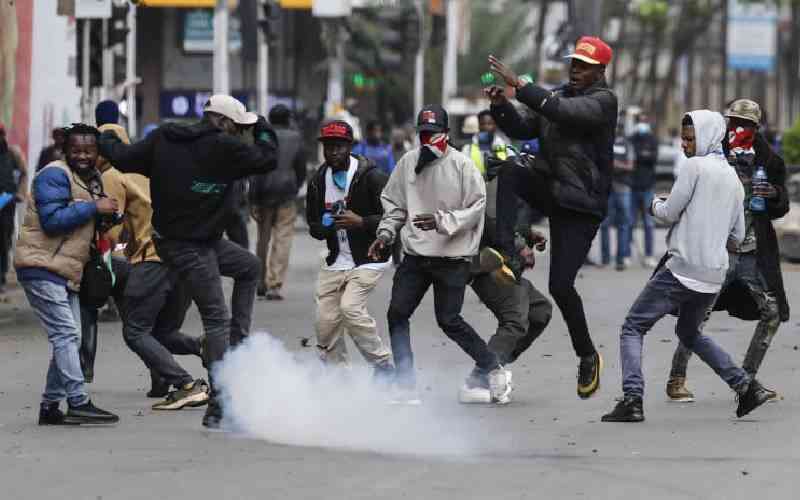
The construction materials value chain is one of the key value chains under Kenya’s Fourth Medium Term Plan 2023-2027 (MTP IV).
It emphasises promoting local production of affordable construction materials such as steel and cement for local and international markets. It is also at the heart of President William Ruto’s affordable housing programme. This may explain why the government has jealously protected the local cement and steel industries.
The Finance Act 2022 introduced an Export Levy rate of USD 175 per tonne on iron ore. This is in addition to the already existing 8 per cent royalty based on export sales value. The purpose of this levy was to discourage exports so that our local steel factories utilise the iron ore mined locally.
Later, in 2023, through the Finance Act of that year, the government introduced a 17.5 per cent Export and Investment Promotion Levy on semi-finished steel and bars and rods of iron to discourage imports and further protect our local industries, grow our mining sector, increase our exports of value-added products, attract investors, make the country self-reliant on construction materials and save our much-needed foreign currency.
While introducing the two levies was well-intended, some critical issues were overlooked. One, though the export of our iron ore was restricted through the 2022 levy, the government did not limit the importation of iron ore and steel coils to encourage the use of locally extracted industrial minerals and grow our mining sector.
Hence, even though the government achieved one objective of the levy, that is, our iron ore became uncompetitive in the international market as the levy of USD 175 per tonne on iron ore is higher than the prevailing global market price of approximately USD 115 per tonne, other objectives of the levy are not being realised.
Indeed, allowing imports of iron ore and steel coils (used to produce materials for the construction industry, such as building panels, pipes, and reinforcing bars) while at the same time restricting imports of affordable semi-finished steel and bars and rods of iron is counterproductive for two reasons.
One, the steel companies are not sourcing iron ore locally to grow the mining sector and ensure that Kenya is self-reliant regarding construction materials as intended by the two levies. Two, consumers are restricted to using locally manufactured steel (which is not necessarily cheap because of different factors) as internationally competitively priced steel is too expensive to import because of the Export and Investment Promotion Levy.
According to the Observatory of Economic Complexity (OEC), our total iron ore imports in 2022 from Uganda, South Africa, India, the United Kingdom, and China were worth approximately Sh4.8 billion.
In 2023, our imports of iron ore increased instead of decreasing despite the levy, whose aim was to promote the use of locally sourced iron ore by our local industries. According to the Kenya Ports Authority (KPA) database, our iron ore imports were approximately 418,500 MT (excluding Uganda’s) between March 13, 2023 and March 3, 2024, valued at approximately Sh6.4 billion. The KPA database further shows that there has been a significant increase in the import of steel coils between December 2023 and March 2024.
The second critical issue that was overlooked is the blanket levy on iron ore. In nature, iron ore occurs in two forms - magnetite or hematite. Iron ore magnetite has a dense structure and requires high temperatures and a lot of energy for the reduction process compared to iron ore hematite, which is less dense. Thus, the less dense hematite is preferred as a primary raw material by a majority, if not all, of the country's local steel and cement factories. Hence, the deposits of iron ore magnetite extracted in Kenya have not been used much in the country.
Unfortunately, following the levy's introduction, companies that were mining/sourcing and exporting iron ore magnetite could not export the mineral. Consequently, we risk losing our iron ore export markets (China, Estonia, and South Africa), where we exported iron ore worth USD 5.3 million (Sh678.4 million) in 2022, according to the OEC. Based on our iron ore reserves, one company can export over Sh1.5 billion worth of iron ore annually.
In conclusion, despite the levies that were well intended, the local price of steel has increased by approximately 60 per cent. As a result, the cost of construction has since shot up. Hence, for the levies to achieve the intended objectives, the government should consider restricting the importation of iron ore and steel coils within acceptable trade rules. This will encourage the use of locally extracted industrial minerals and help our mining sector grow.
Concerning the mining sector, the government should consider exempting iron ore magnetite from the export levy to boost our foreign exchange earnings.
Additionally, introducing strategic measures in the manufacturing and mining sectors, such as reducing the cost of energy, offering appropriate incentives, and investing in proper infrastructure to reduce logistic costs, will enable our steel companies to produce internationally competitive steel products in terms of price and quality.
Other strategic measures for the mining sector include ensuring the availability of proper mining data to both international and local investors to enhance the accuracy of companies exploring minerals in the country and improving the efficiency of government regulatory and compliance processes, including the issuance of mining licences for pending and new applications following the phased lifting of the moratorium on mining.
 The Standard Group Plc is a multi-media organization with investments in media platforms spanning newspaper print
operations, television, radio broadcasting, digital and online services. The Standard Group is recognized as a
leading multi-media house in Kenya with a key influence in matters of national and international interest.
The Standard Group Plc is a multi-media organization with investments in media platforms spanning newspaper print
operations, television, radio broadcasting, digital and online services. The Standard Group is recognized as a
leading multi-media house in Kenya with a key influence in matters of national and international interest.











